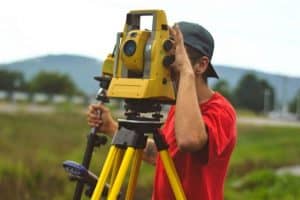Before you go lake fishing, prepare your appropriate gear and bait. With the right bait, you will catch more and have a better fishing experience. What is the best bait for lake fishing?
The 10 best bait for lake fishing are as follows:
- Worms
- Other insects
- Minnows
- Deli shrimp
- Leeches
- Clams
- Mussels
- Single salmon eggs
- Krill
- Dough balls
Read on to learn more about each of the bait listed above and how to use them on your lake fishing adventures.
Also, we hope you find the links here useful. We may get a commission if you purchase something through a link on this page, so thank you!
Best Bait for Lake Fishing

If you’re looking for the best bait for lake fishing, here are the best types of bait you can select from:
1. Worms
Worms are the most popular bait for lake fishing as they could attract almost all freshwater fish species. You can find them in the dirt, or you can purchase them. Use earthworms for walleyes and bass and smaller worms for sunfish and trout.
Worms are good lake fishing bait for catching:
- Sunfish
- Trout
- Bass
- Walleyes
- Other fish types
2. Other Insects
You can buy insects from bait shops or catch them on your own. Insects, such as ants, caterpillars, beetles, crickets, and grasshoppers, can attract sunfish and trout. These insects are excellent bait for trout fishing.
Insects are good bait for catching:
- Sunfish
- Trout
3. Minnows
Minnows are baby fish that you could use as bait. If you want to catch pike or bass, you could choose the bigger minnows. For smaller fish, you can use smaller minnows as well.
Be careful not to damage the minnow’s spinal cord, so it can keep moving. It would help if you hooked the minnow vertically using its lips or tail.
Minnows are good bait for catching:
- Bass
- Pike
4. Shrimp
There are three shrimp types for bait fishery: brown shrimp, pink shrimp, and white shrimp.
The pink and brown shrimp are in the New Smyrna to Fort Piece, while the pink shrimp is mainly caught on the west coast of Florida. The white shrimp is found mostly at the bait fishery north of New Smyrna. These shrimp types are also used for food.
If you want to catch catfish, bass, trout, or panfish, live freshwater shrimp is a superb bait. For carp, catfish, and bluegills, dead saltwater shrimp is your best option. Attach the hook all the way from head to tail for good results.
Shrimp is good bait for catching:
- Catfish
- Bass
- Trout
- Panfish
5. Leeches
If you want to catch northern pikes or walleye, leeches are the best bait. They are readily available in bait shops. When setting up your bait, allow the hook to go through the sucker to secure it adequately.
Leeches are good bait for catching:
- Pike
- Walleye
6. Clams
You can use freshwater clams as bait for all types of fish. You could break the shell and hook its meat as bait. Indeed, you will catch a variety of fish species.
Clams are good bait for catching:
- Striped bass
- Trout
- Fluke
- Sea Robin
- Blackfish
- Flounder
- Bluefish
- Sea bass
- Rockfish
- Porgy
- Sharks
- Whiting
- Surfperch
7. Mussels
Like clams, you can discard the shell and extract the meaty part to use as bait. Hook the meat firmly into the bait and lower it into the water.
Mussels are a great choice for lake fishing bait. They will be effective at catching the same fish as described above for clam bait.
8. Trout or Salmon Eggs
Trout or salmon eggs are good baits for catfish, steelhead, salmon, bluegill, bass, suckerfish, and trout. Trout are so enticed by fish egg bait during spawning season that they’ll usually ignore other types of baits and lures.
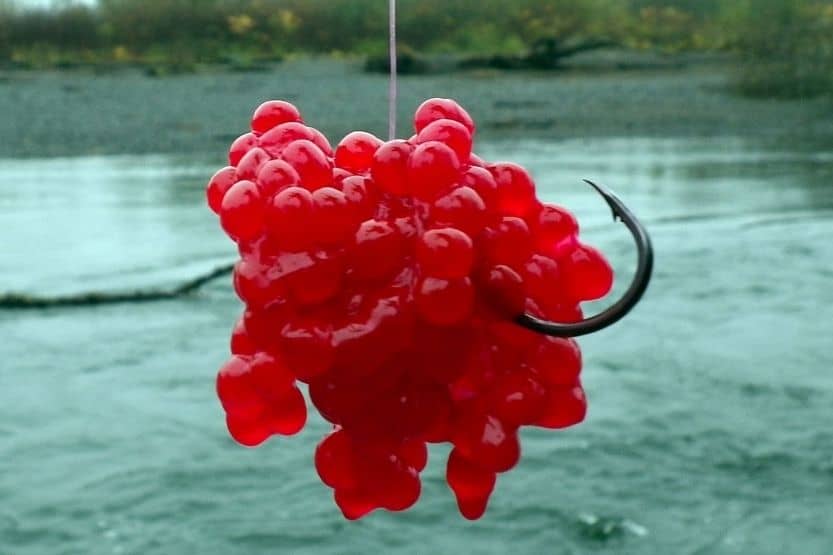
Trout or salmon eggs are good bait for catching:
- Catfish
- Steelhead
- Salmon
- Bluegill
- Bass
- Sucker
- Trout
9. Krill Meal
Krill meal is a combination of milk proteins and fishmeal that carps are attracted to. Carp anglers should try this type of bait as it’s a perfect bait for any carp lake fishing trip.
10. Dough Balls
One advantage of store-bought bait is the convenience. However, it is also easy to make bait at home with water, cornmeal, flour, and flavoring. To use it, mold the ball around the hook securely.
Homemade dough balls are good bait for catching:
- Catfish
- Carp
Lake fishing is a rewarding event that everyone should experience. However, your activity’s success depends primarily on your bait’s suitability and the type of lake you’re fishing at.
What Do You Need for Lake Fishing?
1. Ultra-Light Spinning Rod
You will need a 6 to 9-foot rod for a 4 to 10-pound-test line. Ensure that the rod you bought is of high quality.
2. Small Spinning Reel
It would be best if you loaded it with a 6 to 10-pound-test braided line or monofilament. The reel has a crucial role in pulling in your catch.
3. Fishing Floats
You can use 10 to 15 grams of fishing floats for terminal tackle. If you want to change the weight, this will depend on your area and your water vessel.
4. Slip Weights
You will need the ¼ to 3/8-ounce egg-style slip weights. Feel free to choose the slip-weight design that you need.
5. Barrel Swivels
#10 to #14 sized-barrel swivels will do. Barrel swivels play as connectors for two separate line sections. Anglers need them because they will keep the fishing line stable and prevent it from twisting.
6. Single Barbless Weight Hooks
Single barbless weight hooks with #6 to #4 sizes will do. Nevertheless, you may need various hooks, depending on the size of the fish you want to catch.
8. A Stable Fishing Boat
You could cast your bait in the shoreline or from the water bank, but it’s best to have your own fishing boat, so you can conveniently transfer from one area to another.
If you cannot afford a boat, then use kayaks. You could easily maneuver to places that cannot be explored on foot or by boat. They’re great for fishing too.
9. Other Lake Fishing Gear You Need
- Polarized sunglasses for sun protection and better visibility;
- Ice chest to store your catch;
- Tacklebox where you keep extra lines, extra hookers, and similar fishing materials;
- Net in case you want to use it other than rod and reel; and
- Needle nose pliers to remove hook out of fish.
Again, what is the best bait for lake fishing? The best bait choices for lake fishing are insects, minnows, shrimps, leeches, worms, clams, mussels, single salmon eggs, krill, and dough balls.
Click here to see this Garmin 010-01550-00 Striker 4 with Transducer on Amazon.
How to Store Plastic and Live Lake Fishing Baits?
Plastic and live baits are stored differently. You should sort them out for plastic baits, store them separately in boxes with adjustable compartments, and label them accordingly. Hence, you can have a box for big worms, small worms, shrimps, crickets, and so forth.
This organized arrangement will save time as you can quickly access the bait you want to use. You could also use Ziplock bags, but be careful not to bend your plastics as they could remain that way and be difficult to use later.

For live baits, you have to keep them in a cool place to remain healthy before using them. Keep the live baits in a baitwell with a 5° F lower than that of the lake.
The lower temperature will increase the bait’s oxygen saturation and will help reduce stress. You can do this by adding ice inside a bottle or container.
Live bait is the best bait, as most fish could never resist the natural odor and appearance of a moving live bait.
Next, let’s learn some tips on lake fishing that could help you experience lake fishing successfully.
Click here to see this ZACX Fishing Pliers on Amazon.
Tips for Lake Fishing
Click here to see this TOPFORT 187/230pcs Fishing Accessories Kit on Amazon.
1. Secure a Permit If Necessary
Know the fishing regulations of the lake and secure a permit, if necessary. Also, know if there are limits to the number of fish you can catch per day. You wouldn’t want to be paying fines when you’re out there, supposedly, to enjoy fishing. There are also lakes in which plastic baits are prohibited.
2. Anchor Your Boat at the Front and Back
It would be best if you secured your boat correctly, so you can cast your bait where you want it to be. An unstable footing can throw you off balance when reeling in your catch or when casting your line.
3. When Fishing in Man-Made Lakes Use Edges or Drop-Offs
Fish will stay on the edges and drop-offs of human-made lakes because they can quickly obtain food in that area, seek cover, and have a haven to stay. Artificial lakes are created when people build dams and similar structures over waterways.
4. You Can Fish by Casting or Hanging
You can catch your fish by hanging the bait below your boat or by casting your bait out from shore. Your method would depend on your fishing area and the lake’s geography. Nevertheless, you could catch more fish if you have a boat or kayak that could take you to any area in the lake.
5. When Fishing in Natural Lakes Use Areas Near the Shoreline
The shoreline areas near vegetation are the best places where fish will congregate, as the vegetation provides more oxygen, sufficient cover, and protection for the fish.
You could also notice these areas, as there would be a perceptible change in their appearance. As you gain experience, you will learn how to recognize these areas.
6. Use Float Fishing in Shallow Waters
The best method to fish in 3 to 15 feet (1 to 5 meters) of shallow water is float fishing. This method also works well when fishing over weed beds. Nonetheless, feel free to experiment in different depths and discover things for yourself.
7. Use Bottom Fishing in Deep Waters
When the water is 15 to 60 feet (5 to 20 meters) deep, use bottom fishing. You can suspend your bait directly below at the bottom of the lake or just above the bottom. You could move your bait now and then in other parts of the water to search for your prospective catch.
Sometimes, there are ‘smart’ fish species that know when the food offered is bait or not. Outsmarting them would be fun.
8. Be Alert
Beginners should be alert, as the initial bite could be light and may go unnoticed. Keep the line steady and apply a little tension. As soon as you feel a slight tug, be ready to reel in the bait.
Don’t worry because as you get used to fishing, you would instantly know when you have a catch by merely observing the bait’s line.
9. Safety Should Be Your Priority
Remember to wear a life jacket, a wader belt, or similar lifesavers as you can never tell when accidents happen. Your safety should be your priority. If the area appears unsafe, then skip it. There are many safe areas you can find to throw your bait.
Prepare a list of what to take with you, and double-check your water vessel as well. You should stock your tackle box sufficiently to avoid running out of fishing paraphernalia and extra materials.
10. Be Confident
You’re there to catch fish – and you will. Each time you cast your bait, think that you will snare your first catch. Think positively, no matter how many times you fail. Eventually, you will succeed. As the cliché goes: “Persistence is the key to success.”
Conclusion – Best Bait for Lake Fishing
The 10 best baits for lake fishing are as follows:
- Worms
- Other insects
- Minnows
- Deli shrimp
- Leeches
- Clams
- Mussels
- Single salmon eggs
- Krill
- Dough balls
You can use any of these baits according to the type of fish you want to catch. The most common bait is worms, as you can get them anywhere, and many fish species devour worms.
Remember to keep track of your lake fishing progress, so you could slowly learn the ropes. Next time you go fishing, you would have gained more experience and would certainly relish your angler’s activity.
Related reading:
How Long Is a Rod? (Unit of Measurement) vs. Fishing Rod Length





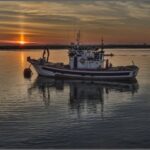
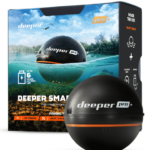
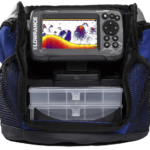
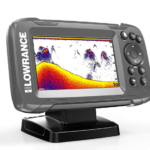

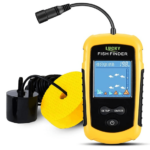
![Read more about the article Poling Platform [What Is It and How It Helps You Catch Fish]](https://boatinggeeks.com/wp-content/uploads/2021/04/poling-platform-300x200.jpg)
